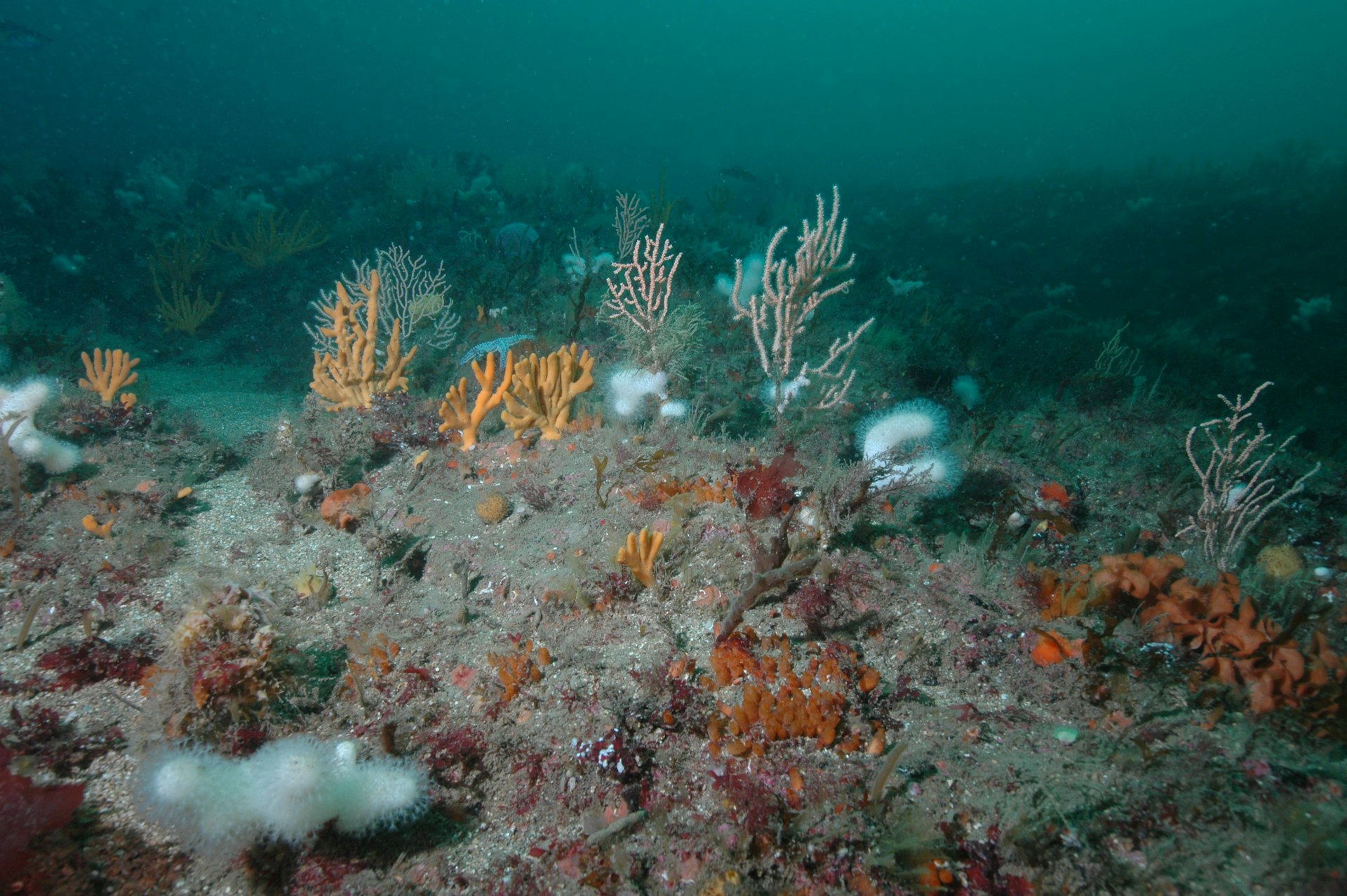
Marine Net Gain Research and Evidence Project (Marine Futures Internship Programme 2022)
Each year The Crown Estate’s interns carry out relevant and impactful research projects to drive value for the marine sector. Once finalised and approved for publication, these project outputs are held on the MDE. We hope to not only ensure that the hard work achieved by our interns can continue to add value, but that by making their work publicly available, we can promote collaboration and reduce duplication.


Thomas Brady
Environment and Consents Specialist at Ørsted (Marine Futures North West Intern 2022)
Prior to the internship, Tom studied BSc Marine Geography at Cardiff University with a year in industry at an eNGO. Tom assisted the partners on a range of tasks during his internship, but his main focus was investigating the feasibility of a Biodiversity Credit Market in the UK based on the Biodiversity Net Gain Metric. Upon completion of the internship, Tom was hired by Ørsted as an Environment and Consents Specialist, and has had the chance to work on the operation and maintenance of both Hornsea 1 and 2, two of the largest offshore wind farms in the world (as of 2022/2023).
Amber Gould
Marine Officer Wildlife Trust ( Marine Futures North West Intern 2022)
Prior to the internship, Amber studied a BSc in Biological Sciences at Durham University and a MRes in Ocean Sciences at Southampton University. During the internship, Amber delivered projects on seagrass restoration, mapping marine and coastal restoration projects across the UK and community engagement work. Since the internship’s end Amber has continued at Cumbria Wildlife Trust within their marine recovery team, developing resources for schoolchildren to become advocates for the coastal environment and engaging local communities with marine wildlife.

"To highlight the priorities and potential barriers to calculating and implementing Marine Net Gain, this report utilises the data from an existing offshore wind farm to test a simple prototype marine metric inspired by Natural England’s "BNG 3.1" metric. The report also highlights how achievable Marine Net Gain could be, under the various versions of the policy.
Thomas Brady and Amber Gould
Project Overview
To tackle the joint aspirations of expanding the offshore renewable energy sector and assisting marine nature recovery, the UK Government is currently developing a new policy titled “Marine Net Gain”. This policy will require developers to leave marine biodiversity in a measurably better state than they found it at the start of development, and is similar to the Biodiversity Net Gain policy, which was developed for terrestrial and intertidal environments.
Biodiversity Net Gain relies on a metric (The Biodiversity Metric 3.1, Natural England) to calculate the value of biodiversity attributable to a development in the form of habitats lost, degraded, added or improved through the development. Several challenges arise when applying this approach and the net gain concept to the marine environment, including but not limited to the scarcity of knowledge on the current condition of UK marine habitats, strategies to restore them, and mobile species whose response to developments may not be captured by habitat impacts alone. With Marine Net Gain policy currently in the early stages of development, solutions to these uncertainties are still emerging.
This report uses data from Walney Extension Offshore Wind Farm to generate three offshore wind farm “scenarios” which were tested against an experimental marine version of Natural England’s Biodiversity Metric, to highlight some of the advantages and challenges of using a metric to calculate biodiversity value of marine environments, as well as some of the more general challenges of implementing Marine Net Gain policy. Two versions of this metric were tested within the report, with one metric including a “strategic significance” factor which increased the value of a habitat if it was located within an area of particular importance to biodiversity, for example a Marine Protected Area. An additional metric was used to calculate the impact of a development on species. A summary of each scenario and the key challenges addressed within each trial is outlined below:
Scenario 1:
A hypothetical area of seabed with the same area as Walney Extension, to maintain consistency with other scenarios. Trials run within Scenario 1 demonstrated the function of the test MNG metric by altering different habitat parameters and observing the impact on a habitat’s biodiversity value. Results from this scenario demonstrated the functionality of the metric and highlighted that the scales used to quantify habitat importance and condition, as well as categorise the type of habitat were very broad. This prevented distinctions between habitats that differed in importance or condition on a slighter, yet significant scale, as well as preventing habitat classification to a fine enough scale to appropriately describe the biodiversity present.
Scenario 2:
A true-to-life case study using the area and location of Walney Extension Offshore Wind Farm. This scenario aimed to quantify the total biodiversity loss attributed to Walney Extension and estimate how much marine habitat restoration would be required for a modern-day wind farm to achieve net gain. The trials modelled restoration using different restoration strategies, and identified challenges with these calculations and approaches. The need for finer scales was reinforced by the results of Scenario 2 trials, which demonstrated that all three habitats present within Walney Extension were calculated to have identical biodiversity values per hectare, despite significant variation in the likely biodiversity supported by each habitat. The biodiversity value of the maximum impacts consented for Walney Extension was calculated to be approximately 3 times larger than the biodiversity value of the area actually impacted by construction; this poses important questions around what stage of a development’s consenting or construction process should be included in Marine Net Gain calculations.
Attempting to achieve a net gain through different habitat restoration strategies demonstrated that restoring the same area of the same habitats originally impacted by development would not achieve net gain, owing to the lack of reliable restoration strategies. This was described by a “delivery difficulty” multiplier included in metric calculations which reduces the value of a habitat restoration effort as the difficulty of delivering it increases. Achieving net gain through simulating pressure reduction on an area of the site, for example implementing an exclusion area from anchoring and bottom towed fishing gear, proved to be feasible, posing questions surrounding whether pressure reduction could be considered as a contribution towards Marine Net Gain. Restoration of habitats with existing restoration strategies, such as blue mussel and horse mussel beds, resulted in a net gain; however, areas of restoration required were unnaturally large and impractical, and would not necessarily confer a beneficial increase in biodiversity on the site, as the habitats restored differed significantly from those impacted by development.
Scenario 3:
A hypothetical offshore wind farm using Walney Extension’s array area, but placed in the North Sea 18.78km off of the Great Yarmouth coast, containing complex habitats (Sabellaria spinulosa reef) and mobile species (sandwich tern (Sterna sandvicensis), harbour seal (Phoca vitulina) and grey seal (Halichoerus grypus)). Attempts at achieving Marine Net Gain through restoration within Scenario 3 were met with similar results to Scenario 2 and were exacerbated by the inclusion of a highly important habitat, Sabellaria spinulosa reef. These results highlight the potential necessity for trading rules within the metric (as seen in the Biodiversity Metric 3.1), which would prevent the substitution of a habitat for a considerably different habitat. However, the lack of effective restoration strategies for the majority of marine environments would make it unfeasible to require restoration of similar habitats to those impacted by development. Regarding the need for research and development of new and more effective marine habitat restoration techniques, the possibility of including research efforts as a Marine Net Gain contribution was discussed, though the quantification of such efforts would fall outside of the scope of the metric used in this report. Efforts to quantify the impact of a development on mobile species found within Scenario 3’s location found that the current metric only accounts for mortality of individuals, and is unable to characterise accurately the direct and indirect impacts of a development on a species (such as behavioural changes and loss of mating opportunities). The creation of a model specific to developmental impacts on species populations such as the type used in ecological population modelling, was suggested as an alternative method for quantifying and predicting these impacts.
Further Recommendations:
Beyond the recommendations already noted, it is recommended that a “time to restoration” multiplier be added to the metric, to account for the difference in the likelihood of delivery that is conferred by completing or beginning restoration before beginning a development.
To enable a smooth transition into Marine Net Gain policy, developers and stakeholders should be involved in the development of a metric, to improve familiarity and understanding of the metric’s approach to calculating Marine Net Gain.
It is recommended that internship partners, alongside other relevant and interested stakeholders, discuss:
The feasibility and practicality of including within a metric:
- Finer habitat classification scales, habitat importance scales and habitat condition scales
- Ecological models to calculate species impacts
- Trading rules to ensure restoration of habitats with similar biodiversity
- The appropriate stage of the consenting or construction process to implement Marine Net Gain requirements
- The generation and collation of data necessary for gaining a greater understanding of marine biodiversity, habitat condition and developmental impacts
- The current most effective method for improving marine biodiversity alongside offshore developments, until a fully developed Marine Net Gain policy is released.
About the internship
The Marine Futures North West Internship Programme was developed by The Crown Estate to provide people interested in a career in the marine environment with a unique opportunity to gain insights and experience across a range of organisations working in the marine sector, with a particular focus on conservation and renewable energy. The aims of the programme are to develop a diverse and skilled workforce, and provide inclusive and accessible opportunities (outside of London and the South East) for people from different backgrounds and communities, to gain a variety of specialist skills, experience and knowledge across the marine sector.
The Marine Futures Internship Programme is funded by The Crown Estate and managed by the North West Wildlife Trusts. The programme was run in partnership with The Crown Estate, the North West Wildlife Trusts, Ørsted and Natural England. Each partner organisation provides opportunities for the interns to develop skills in specialist areas including marine conservation, sustainable fisheries, renewable energy development, marine policy, ecological surveying and community engagement.




